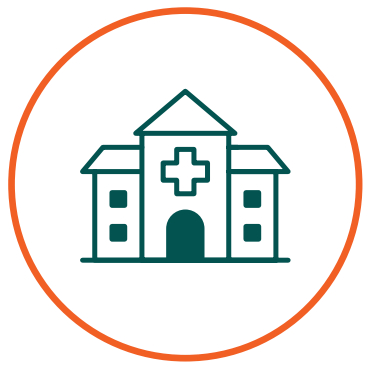Projection Methodology
The revenue projection seeks to estimate four variables that impact a college’s Medicaid revenue potential: health services offered, number of Medicaid-eligible students, number of students receiving services, and average reimbursement per student.

Health Services Offered
We conducted a health services survey that was sent to all community colleges included in the study for which we could find a relevant email address. We also reviewed each college’s website and sought to identify the health services that were offered by each school. Based on these two efforts, we compiled a comprehensive list of the health services offered at each college.
It is important to note that we only considered the service to be offered by the college if the service was or appeared to be funded directly by the college (by providers either directly employed or contracted by the college). If a college partnered with or referred students to a local clinic or hospital to provide the services, and the partner organization billed students (or their insurance) for the services, we did not count the service as offered by the college. We made this distinction because colleges would not be eligible to receive reimbursements for services they did not pay for or directly provide.

Number of Medicaid-Eligible Students
We estimated each college’s number of Medicaid-eligible students by multiplying the percentage of students receiving Pell grants by a constant we termed the “Pell grant/ Medicaid multiplier.” The constant used in this case was 1.60, which posits that for every 100 Pell grant recipients at a college, there are approximately 160 Medicaid-eligible students.
The percentage of students receiving Pell grants is currently the best widely available proxy for measuring the percentage of students with low incomes—but it is far from perfect. There is currently not enough data to definitively assess the accuracy of our Pell grant/Medicaid multiplier in calculating the number of Medicaid-eligible students on a college campus. Therefore, we encourage colleges to apply their knowledge of their students’ financial status when adjusting the default values of the number of Medicaid-eligible students receiving health services.

Number of Students Receiving Services
For each health service offered by a college, we estimated the number of unique students receiving that service. The estimation was based on an in-depth review of health service provision data provided by colleges both during and as a follow-up to the health services survey. Based on these data, we established a set of health service categories that were most commonly used by colleges, then analyzed the number of students receiving one or more services in each category as a percentage of each school’s enrollment. Based on this analysis, we established default values for each school to represent the unique number of students receiving services in each category of services offered by the school.

Average Reimbursement per Student
To estimate the average reimbursement per student, we reviewed each state’s Medicaid fee-for-service schedule and identified the current reimbursement amount for each relevant procedure code that represented the services most commonly offered by colleges as determined by the health services survey and follow-ups to the survey. Based on this review, we established an average reimbursement per student amount for each category of services for each state. It should be noted that reimbursement rates differ by type of facility, type of provider, duration of care, and other factors. Therefore, we encourage colleges to carefully review their state’s reimbursement rates and policies as they review their projection. Given the many variables involved in determining Medicaid revenue potential, the projections provided here should be used as a starting point for the college to conduct its own analysis of revenue potential from Medicaid and should not be viewed as precise indicators of future revenue.
